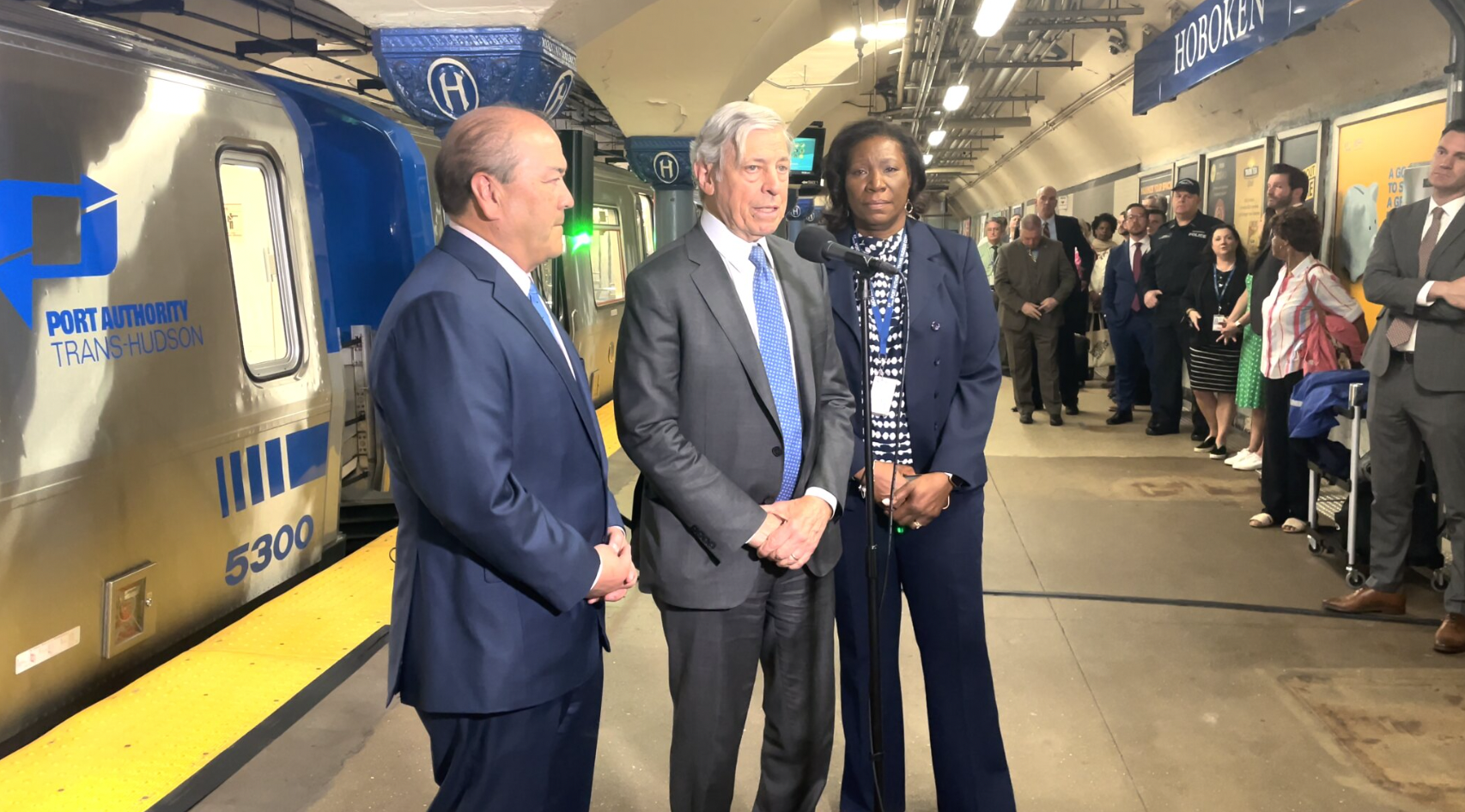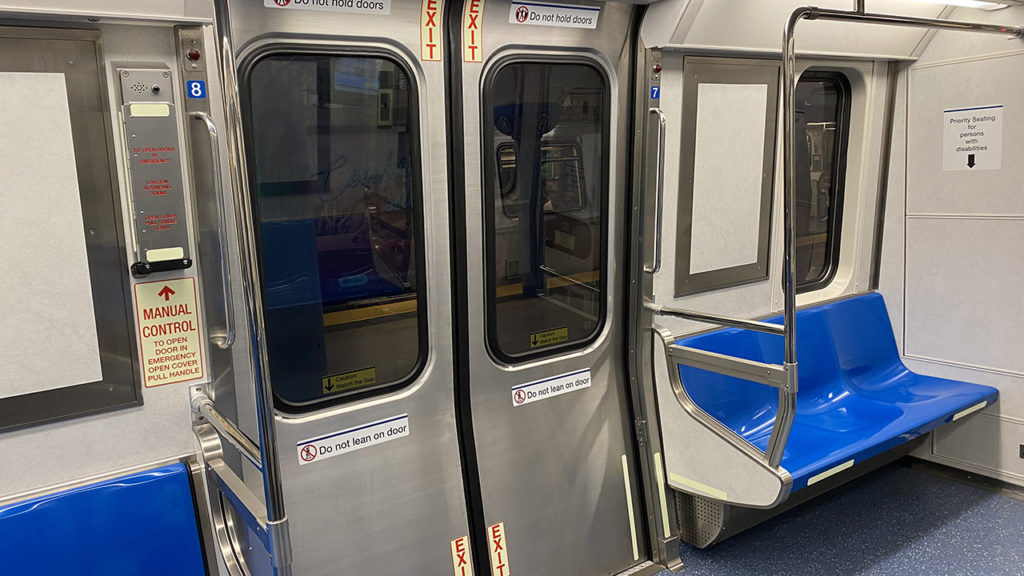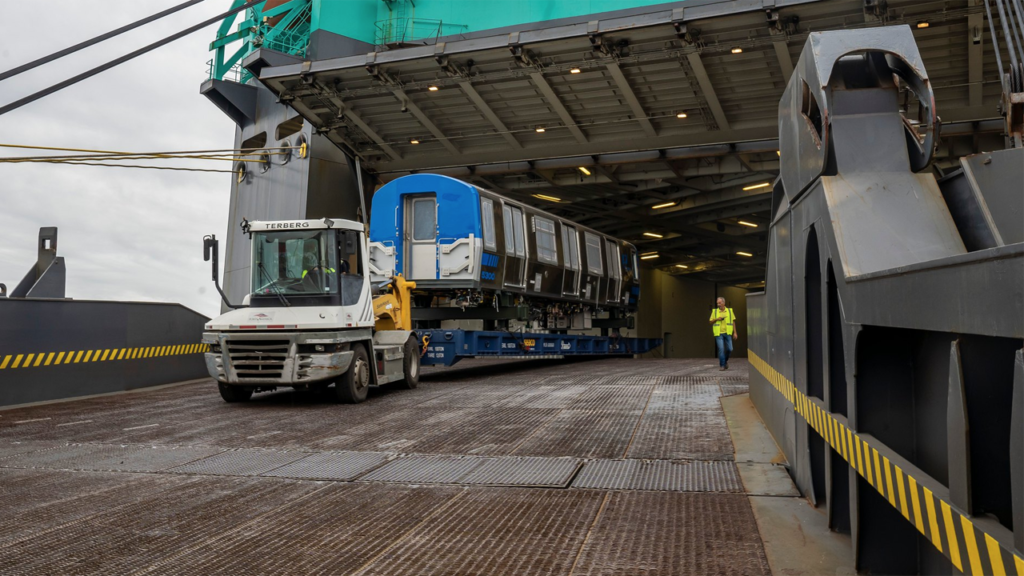written by
Marybeth Luczak, Executive Editor

Port Authority of New York and New Jersey President Kevin O’Toole (left), Executive Director Rick Cotton (center) and PATH Director Clarelle DeGraffe (right) unveiled a train with some of the new Kawasaki wagons at the Hoboken (NJ) PATH station. on April 13. (Credit: PANYNJ)
The first of 72 new Kawaski-built PATH rapid transit cars will enter service in New York and New Jersey starting April 17. The goal: to increase capacity.
The Port Authority of New York and New Jersey (PANYNJ) unveiled some of the new cars at the Hoboken (NJ) PATH station on April 13. Commissioned in 2018, they will complement the current fleet of 350 cars, and will be gradually integrated into the system throughout 2023 and 2024, marking a more than 20% increase in rolling stock, the agency said. The cars will also complement the implementation of PATH’s new nine-car trains in service on the Newark to World Trade Center (NWK-WTC) line. That service began on March 23, and by early 2024, nearly all trains on the line, PATH’s busiest, will be nine-car rush-hour trains.

Part of PANYNJ’s $1 billion PATH improvement plan “to reduce delays and improve the overall customer experience,” the new cars began rolling out last fall at a Kawasaki facility in Yonkers, New York, where they were outfitted and tested before being delivered to PATH.
“With each step of the PATH Improvement Plan, we are bringing better service, easier access, and more modern facilities and equipment to our system,” said PATH Director Clarelle DeGraffe. “Today [April 13] marks another achievement in the agency’s ongoing commitment to providing the best possible customer experience for our riders.”
“The addition of these new train cars aligns with our broader initiative to improve service quality, enhance the customer experience and increase the overall capacity of the PATH system,” said Rick Cotton, PANYNJ Executive Director . “As riders recover from the pandemic, we anticipate more riders using the PATH system, and we want to make sure we have the capacity and reliability people expect.”
According to PANYNJ, the capacity expansion is one of three components of the PATH Improvement Plan, which was introduced in 2019. It calls for increasing capacity through the acquisition of additional railcars; extension of station platforms to accommodate nine-car trains on the NWK-WTC line versus the current eight-car trains; and the use of a new signaling system to run trains more frequently, especially during the morning and afternoon rush hours.



